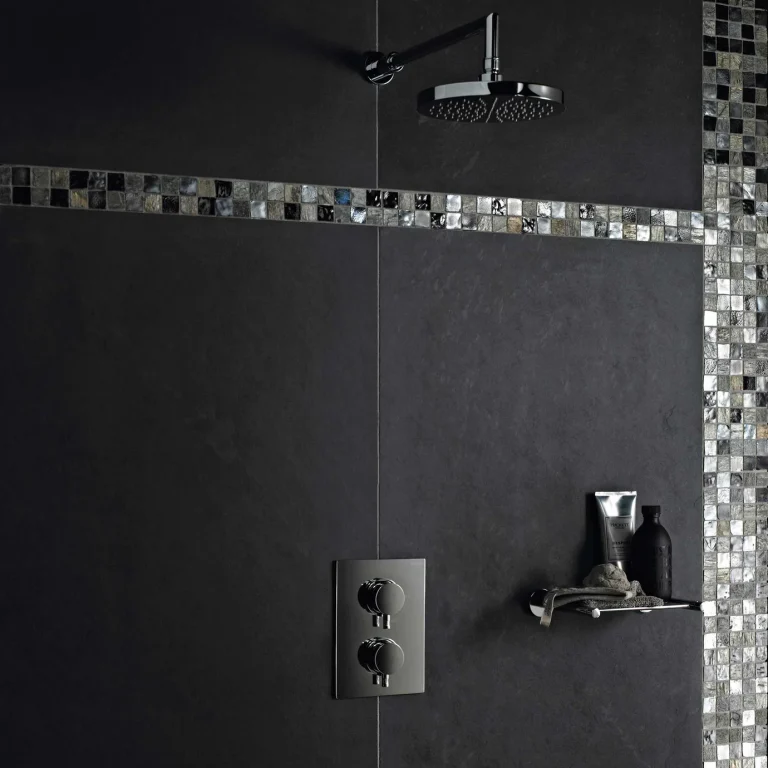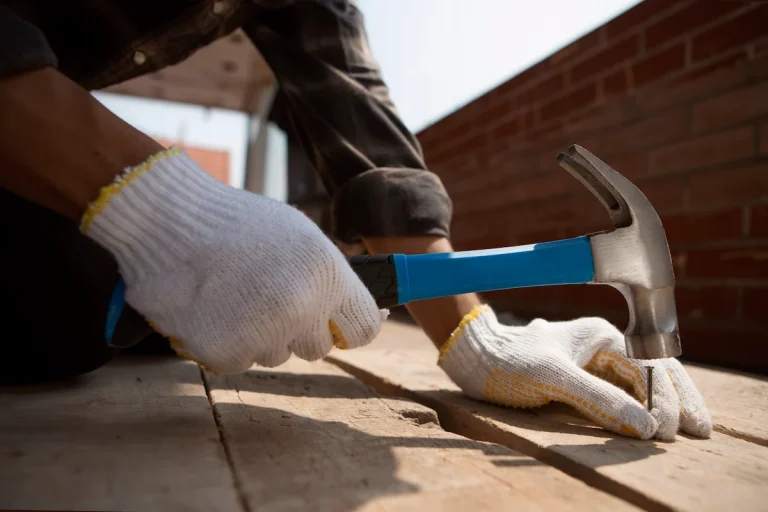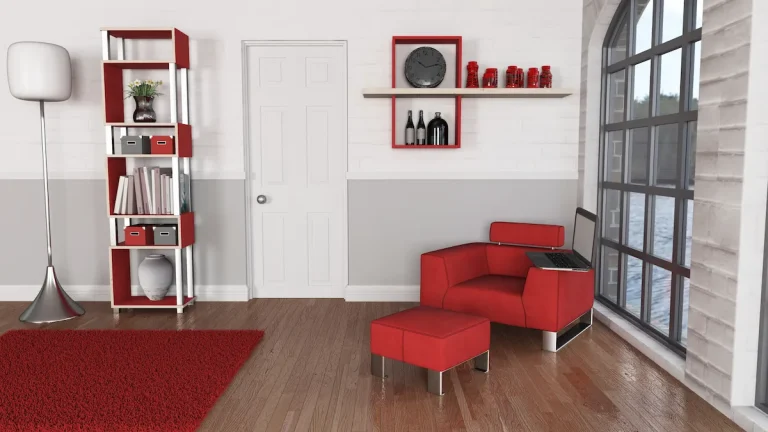Vinyl plank flooring has become a favored option among homeowners who desire an affordable, durable, and aesthetically pleasing flooring solution, especially for those interested in home renovation and interior fitout.
Although the installation process may appear straightforward, numerous DIY enthusiasts often face challenges that result in common mistakes, particularly during DIY installation. Issues such as inadequate subfloor preparation and failure to adhere to manufacturer guidelines can adversely affect both the longevity and appearance of the flooring.
This article aims to provide essential tips for successful flooring installation while highlighting common mistakes when installing vinyl plank flooring to avoid, thereby ensuring that your vinyl plank flooring maintains its visual appeal and durability for years to come.
What Is Vinyl Plank Flooring?
Vinyl plank flooring is a versatile and widely favoured flooring solution that replicates the appearance of natural wood while offering the durability and water resistance characteristic of synthetic materials, making it a great wood alternative. Commonly known as luxury vinyl, this flooring type is engineered to be both visually appealing and practical for a variety of applications, including kitchens, bathrooms, and residential areas, making it a popular choice for residential flooring and kitchen design.
It is composed of multiple layers, featuring a waterproof core, a printed design layer, and a protective wear layer. This composition makes it an exceptional alternative to wood for homeowners seeking stylish yet functional flooring solutions.
Why Choose Vinyl Plank Flooring?
Selecting vinyl plank flooring presents a multitude of advantages, making it a highly attractive choice for both homeowners and designers seeking durable flooring. This type of flooring is characterised by its durability and waterproof properties, making it particularly suitable for high-moisture environments such as kitchens and bathrooms, highlighting the benefits of waterproof flooring.
Furthermore, it requires relatively straightforward maintenance compared to other flooring options, providing ease of cleaning and resistance to stains, scratches, and overall benefits of vinyl flooring maintenance. These qualities contribute to its ability to maintain aesthetic appeal over time.
The Common Mistakes When Installing Vinyl Plank Flooring
Installing vinyl plank flooring is a rewarding do-it-yourself project; however, there are several common mistakes that can impede the success of the installation process, especially when not using a proper installation guide.
Many homeowners underestimate the significance of proper subfloor preparation, which is essential for creating a solid and level base for the flooring. Furthermore, neglecting the acclimatisation period may lead to challenges related to expansion and contraction after the flooring is installed, ultimately compromising its durability and aesthetic appeal.
Other prevalent errors include the use of inappropriate adhesive fasteners and insufficient moisture barriers, both of which can lead to long-term damage to the flooring system, emphasizing the importance of using proper adhesives and adhesive fasteners.
1. Not Preparing the Subfloor Properly
One of the common mistakes when installing vinyl plank flooring is the failure to adequately prepare the subfloor, which can lead to a variety of issues in the future. Proper preparation of the subfloor is essential for ensuring the longevity and optimal performance of the flooring material, particularly in home renovation projects. Inadequate preparation may result in uneven surfaces, which can subsequently cause warping, buckling, or gaps between planks.
To achieve the best possible outcome, it is recommended to follow these steps for effective subfloor preparation and installation of underlayment:
- Cleaning: Begin by removing any debris, dust, and remnants of old flooring materials to establish a clean surface.
- Leveling: Next, evaluate the subfloor for any uneven areas. Utilise a leveling compound, if necessary, to fill low spots and create a smooth, even base.
- Moisture Check: It is imperative to check moisture levels. Employing a moisture meter will assist in determining whether the subfloor is suitable for installation, and considering a vapour barrier might be beneficial.
After preparation, it is advisable to utilise products such as felt pads or underlay to enhance stability. Furthermore, applying vinyl adhesive correctly during installation is crucial for establishing a strong bond and preventing future complications, such as issues with baseboards and trim.
2. Not Acclimating the Flooring Before Installation
Failing to allow an acclimation period for vinyl planks prior to installation is a common oversight that can lead to significant complications in the future.
Allocating an adequate acclimatisation period is essential for the success of any flooring installation, as it enables the ply structure of the planks to adjust to the surrounding environment. This period typically ranges from 48 to 72 hours, depending on the specific product and the conditions at the installation site, which should be noted in any installation guide. During this acclimatisation period, it is crucial to maintain a stable temperature between 18°C and 29°C, along with a relative humidity level of 30% to 50%. Adhering to these conditions minimizes the risks of long-term issues, such as warping or the formation of expansion gaps.
- The installation of a moisture barrier should also be considered, as it protects the flooring from potential moisture damage.
- The technique employed for plank placement, whether staggered or aligned, plays a significant role in both the aesthetics and functionality of the flooring, particularly in a professional interior fitout.
By diligently adhering to the recommended practices during this critical period, one can ensure a durable and visually appealing finish that endures over time.
3. Not Using the Correct Tools and Equipment
The use of incorrect tools and equipment is a common mistake in the installation of vinyl flooring, often leading to unsatisfactory results, which could be avoided with proper layout planning. A successful installation necessitates specific tools such as a tapping block, pull bar, and appropriate cutting tools to ensure precision and accuracy in the placement and adjustment of planks, essential for any DIY installation. Utilising the correct tools not only contributes to achieving a professional finish but also enhances the overall efficiency of the installation process, reducing the need for extra material.
To fully understand the intricacies of vinyl plank flooring installation, it is essential to consider the roles of various fundamental tools. A comprehensive guide to installation typically emphasises the following:
- Tapping Block: This tool is essential for snugly fitting planks while minimising damage.
- Pull Bar: This is useful for securing the final rows of planks together without leaving any gaps.
- Utility Knife: This tool is required for precise cutting of planks to fit around corners and edges.
- Measuring Tape: Accurate measurements are necessary to ensure each plank is cut to perfection.
- Square: This tool helps in aligning the flooring correctly and maintaining straight edges.
Employing substandard or inappropriate tools can not only prolong the installation process but also result in misaligned planks, gaps, and an overall lacklustre appearance.
Thus, dedicating time to prepare the appropriate tools is as crucial as the installation steps themselves.
4. Not Properly Measuring and Cutting the Planks
Not properly measuring and cutting vinyl planks is a critical oversight that can introduce significant challenges during installation, ultimately leading to wasted materials and uneven layouts. Accurate measurements are essential to ensure that each plank fits together seamlessly, particularly at transitions and edges where precision is paramount. Improper cutting can result in jagged edges that not only detract from the visual appeal but may also compromise the integrity of the flooring over time.
To enhance accuracy in your projects, several best practices should be adhered to. Begin by gathering the necessary tools for the task; a high-quality tape measure, straight edge, utility knife, and cutting mat can greatly improve the precision of your work.
- Layout planning is a vital initial step. Before cutting, it is advisable to sketch a diagram of your space.
- Ensure that measurements account for any irregularities within the room, as well as the requirement for expansion gaps around the perimeter.
- When cutting, utilise a straight edge as a guide for your utility knife; this will simplify the process and contribute to clean cuts that will not compromise the overall appearance of the installation.
By implementing these techniques, one can minimise costly errors, promote a more efficient workflow, and achieve a professional finish, suitable for any residential flooring project.
5. Not Allowing for Expansion and Contraction
One critical oversight frequently encountered during the installation of vinyl flooring is the failure to account for expansion and contraction. This oversight can ultimately lead to issues such as buckling or gaps in the flooring over time. Vinyl flooring inherently expands and contracts in response to variations in temperature and humidity; therefore, it is essential to leave adequate expansion gaps around the perimeter of the room and at any transitions to facilitate this movement. Neglecting this fundamental aspect can jeopardise both the performance and aesthetic appeal of the flooring, which are key vinyl flooring benefits.
A comprehensive understanding of the principles governing expansion and contraction is vital for ensuring a successful installation. These phenomena primarily arise from the physical properties of vinyl, which reacts to environmental factors such as heat and moisture. As temperatures increase, vinyl tends to expand, while it contracts under cooler conditions. Consequently, incorporating appropriate expansion gaps is critical to accommodate the expansion and contraction of the material.
- It is recommended to leave a gap of approximately 6 mm to 12 mm around walls and other obstacles.
- Transition strips should be utilised in doorways to accommodate movement.
- Additionally, acclimatising the vinyl prior to installation is advisable, allowing it to adjust to the conditions of the room.
By adhering to these guidelines, homeowners and installers can effectively minimise the risk of performance issues associated with the fluctuating dimensions of vinyl flooring. These practices are crucial for both professional and DIY installation projects.
6. Not Following the Manufacturer’s Instructions
Disregarding the manufacturer’s instructions is a prevalent mistake that can lead to substandard installation and jeopardised warranty coverage for vinyl plank flooring. Each flooring product is accompanied by specific guidelines tailored to its unique characteristics and requirements, which are essential for optimal performance. Deviating from these established guidelines can result in various complications, including improper adhesion, reduced durability, or aesthetic inconsistencies. This is particularly important in regions with varying climates, such as Dubai, where environmental factors can heavily influence installation outcomes.
To ensure a successful installation, it is imperative to thoroughly read and comprehend the manufacturer’s specifications. Adhering to these instructions not only enhances the durability and longevity of the vinyl plank flooring but also assists in achieving the desired aesthetic outcome and maintaining the benefits of vinyl flooring.
- Neglecting proper acclimatisation can result in excessive expansion or contraction.
- Incorrect subfloor preparation may lead to uneven surfaces.
- Failure to utilise recommended adhesives can cause peeling or gaps.
All of these factors can adversely impact the flooring’s performance and lead to costly repairs. Therefore, meticulous attention to detail during the installation process is crucial for maintaining the flooring warranty and ensuring a beautiful, lasting result. Proper floor maintenance post-installation is also vital to preserve the quality and appearance of the flooring.
7. Not Using Enough Adhesive
Failing to utilise an adequate amount of adhesive during the installation of vinyl plank flooring may result in the planks shifting or separating over time, thereby compromising both functionality and aesthetic appeal. This is particularly true when installing vinyl flooring over areas with floor vents, which can present additional challenges.
Proper application of adhesive is essential for ensuring a secure bond between the flooring and the subfloor, which in turn prevents movement that could lead to damage or noise. It is imperative to adhere to the recommended guidelines regarding adhesive quantity and application techniques to achieve a durable installation.
There are various types of adhesives available for vinyl flooring, including pressure-sensitive adhesives, which permit repositioning, and hard-set adhesives, which create a permanent bond. Selecting the appropriate type of adhesive not only influences the lifespan of the flooring but also its overall performance.
- Before applying adhesive, it is crucial to prepare the subfloor by cleaning and levelling it.
- Always consult the manufacturer’s recommendations for specific adhesive types that are suitable for the selected vinyl flooring.
- Utilising a roller post-installation can assist in ensuring proper adhesion and eliminating trapped air.
By following these best practices, one can significantly enhance the durability and aesthetic appeal of vinyl flooring.
8. Not Properly Securing the Planks
Improperly securing the planks during vinyl flooring installation can result in numerous issues, such as movement, gaps, and overall instability. To ensure that each plank is securely in place, it is essential to adhere to the proper installation techniques detailed in the flooring installation guide, especially when working around baseboards trim or floor vents.
One of the critical aspects of achieving a flawless installation is maintaining a perfectly flat surface prior to laying down the planks. Uneven subfloors not only compromise the adhesion of the vinyl but can also lead to unsightly bulges and wear patterns over time. To address this issue, it is essential to:
- Assess the subfloor for irregularities and fill any gaps or cracks with a suitable levelling compound to ensure a stable foundation.
- Utilise spacers during installation to accommodate necessary expansion and contraction of the material.
- Employ appropriate cutting techniques to avoid sharp edges that may detract from the flooring’s overall aesthetic.
A well-secured floor not only enhances the durability of the vinyl but also significantly improves the comfort and longevity of the flooring, thereby making it a valuable investment in any home improvement project.
9. Not Removing Baseboards or Trim
Overlooking the necessity of removing skirting boards or trim prior to the installation of vinyl plank flooring is a common oversight that can adversely affect the overall appearance and proper fit of the new flooring. It is imperative that skirting boards and trims are removed to facilitate an accurate installation and to allow for the required expansion gaps around the perimeter of the room. Neglecting this step may result in gaps or visible seams, thereby detracting from the aesthetic value of the flooring.
This practice not only ensures a cleaner appearance but also helps prevent potential damage to both the new flooring and the existing trim. When preparing to remove skirting boards and trim, it is essential to use appropriate tools, such as a pry bar and a utility knife, to minimise the risk of splintering or chipping the materials.
- Carefully score the caulk along the top of the skirting board to facilitate removal.
- Begin at one end, gently prying it away from the wall.
After the flooring installation is completed, the skirting boards can be reinstalled using fresh nails, ensuring that they adequately cover the expansion gap while creating a polished and seamless look that enhances the beauty of the new vinyl flooring.
10. Not Cleaning the Subfloor Before Installation
Neglecting to thoroughly clean the subfloor prior to the installation of vinyl plank flooring can result in numerous complications, including inadequate adhesion and compromised performance. Dust, debris, and residues can obstruct the proper bonding of the flooring to the subfloor, undermining the efficacy of the moisture barrier and potentially leading to damage over time. Ensuring a clean surface is essential for achieving a successful and long-lasting flooring installation.
The preparation of the subfloor entails several critical steps that must not be overlooked. Initially, it is important to remove any existing flooring materials and dispose of them properly to prevent the introduction of contaminants. Subsequently, the area should be vacuumed to eliminate any loose particles, followed by a thorough scrubbing using an appropriate cleaner.
- Recommended cleaning solutions may include a mixture of warm water and mild detergent, or a specialised flooring cleaner specifically designed for subfloors.
- After scrubbing, it is advisable to rinse the area with clean water to eliminate any residual cleaning agents.
- It is crucial to ensure that the subfloor is completely dry before proceeding with the installation of the vinyl planks, as moisture can negatively impact both adhesion and the integrity of the moisture barrier.
By adhering to these steps, the significance of maintaining a clean workspace is underscored, facilitating optimal flooring performance.
11. Not Using a Tapping Block or Pull Bar
Neglecting to use a tapping block or pull bar during the installation of vinyl planks may result in gaps or uneven seams, ultimately undermining both the aesthetic and structural integrity of the flooring. These tools are specifically designed to ensure that the planks are secured tightly together, facilitating a perfect fit without visible seams or spaces. Disregarding their use can lead to an unprofessional appearance and potential long-term issues with the flooring.
To enhance the efficiency of the installation process, consider the following guidelines:
- Positioning: Always place the tapping block against the edge of the plank, ensuring that it is flat and properly aligned.
- Gentle Taps: Use a mallet for controlled, gentle taps to prevent cracking or deterioration of the laminate.
- Pull Bar Usage: When connecting the last plank in a row, the pull bar is essential for closing gaps without excessive force, ensuring a neat finish.
By incorporating these techniques, installers can achieve a flawless and durable flooring outcome, thereby enhancing the overall appeal and functionality of the space.
12. Not Checking for Levelness
Not verifying the levelness of the subfloor prior to installing vinyl plank flooring constitutes a significant oversight that can result in an uneven surface and subsequent complications. An unleveled subfloor may lead to shifting, buckling, or the formation of gaps between the planks, adversely affecting both the aesthetic appeal and overall functionality of the flooring. It is imperative to ensure a level foundation for a successful and durable installation.
To effectively assess levelness, one may utilise straightforward yet efficient tools such as a level or a straightedge. The process begins by measuring various points across the subfloor with the level, ensuring that any deviations are duly documented.
If discrepancies are detected, several corrective measures may be implemented:
- For minor dips, a self-levelling compound can be applied to fill in low spots.
- High areas may be addressed using a floor scraper to reduce protrusions.
- In cases of more substantial issues, the installation of a new subfloor layer may represent the most effective solution.
Attending this critical step can significantly influence the overall success of the installation, resulting in a smooth and visually appealing finish.
13. Not Leaving Enough Space for Transitions
Failing to allocate sufficient space for transitions between different flooring types or areas constitutes a prevalent oversight that may result in significant issues following installation.
Accurately accounting for these transition spaces is essential, as it impacts both the visual appeal and the longevity of the flooring. Transition strips facilitate the seamless integration of various flooring materials, such as hardwood to tiles or vinyl to carpet, while safeguarding edges that may become frayed or damaged in their absence.
- It is imperative to measure the widths of the flooring materials with precision when planning for these transitions.
- Understanding the expansion characteristics of each material is crucial in determining the appropriate gap required, which typically ranges from 6 mm to 12 mm.
- Consulting manufacturer guidelines is advisable to ensure adherence to recommended practices.
Anticipating the necessity for adequate expansion and contraction gaps can prevent unsightly damage, thereby ensuring the flooring not only endures over time but also retains its intended aesthetic appeal.
14. Not Properly Sealing the Edges and Seams
Failure to adequately seal the edges and seams of vinyl plank flooring may result in moisture infiltration and potential damage over time. Proper sealing is essential to maintaining the integrity and visual appeal of the flooring, as poorly sealed edges can create gaps that allow debris and moisture to enter. This oversight can compromise the flooring’s structural integrity and lead to costly repairs.
To effectively address these issues and enhance the longevity of the flooring, various sealing methods are available. Among these, caulking is a common and reliable technique, particularly when using high-quality latex or silicone-based products that demonstrate flexibility and strong adhesion to different surfaces. It is advisable to apply caulk along the edges and seams during the installation process.
Incorporating these sealing methods not only preserves the aesthetic appeal of the flooring but also protects against irreversible damage over time.
15. Not Allowing Enough Time for the Adhesive to Dry
One final common mistake when installing vinyl plank flooring is failing to allow sufficient time for the adhesive to dry properly. Accelerating this process can result in inadequate bonding, leading to shifting planks and an unsatisfactory appearance. It is imperative to adhere to the manufacturer’s guidelines regarding drying times to ensure a secure and enduring installation.
Adhesive drying times can vary significantly among different products, indicating that the specifications for one adhesive may not be applicable to another. For optimal results, consider the following recommendations:
- Carefully read the label: Each adhesive will delineate its ideal drying time; it is essential to conform to these guidelines.
- Environmental factors: Take into account variables such as temperature and humidity, as these can substantially impact drying times.
- Conduct a touch test: Before advancing to the next stage of installation, lightly touch the adhesive to assess its tackiness.
Ultimately, investing time in respecting the drying period can prevent future complications and enhance the durability of the flooring. Properly adhered planks not only improve aesthetic appeal but also exhibit superior performance under a variety of conditions.
Avoiding these common mistakes can be challenging, especially if you’re new to flooring installations. That’s where TEKA Flooring comes in. Our team of skilled professionals ensures a flawless installation every time, saving you time, stress, and costly errors.
Let us help you transform your space with expertly installed vinyl plank flooring. Contact TEKA Flooring today to schedule your consultation and experience the difference that professional craftsmanship makes!
Read also:

































